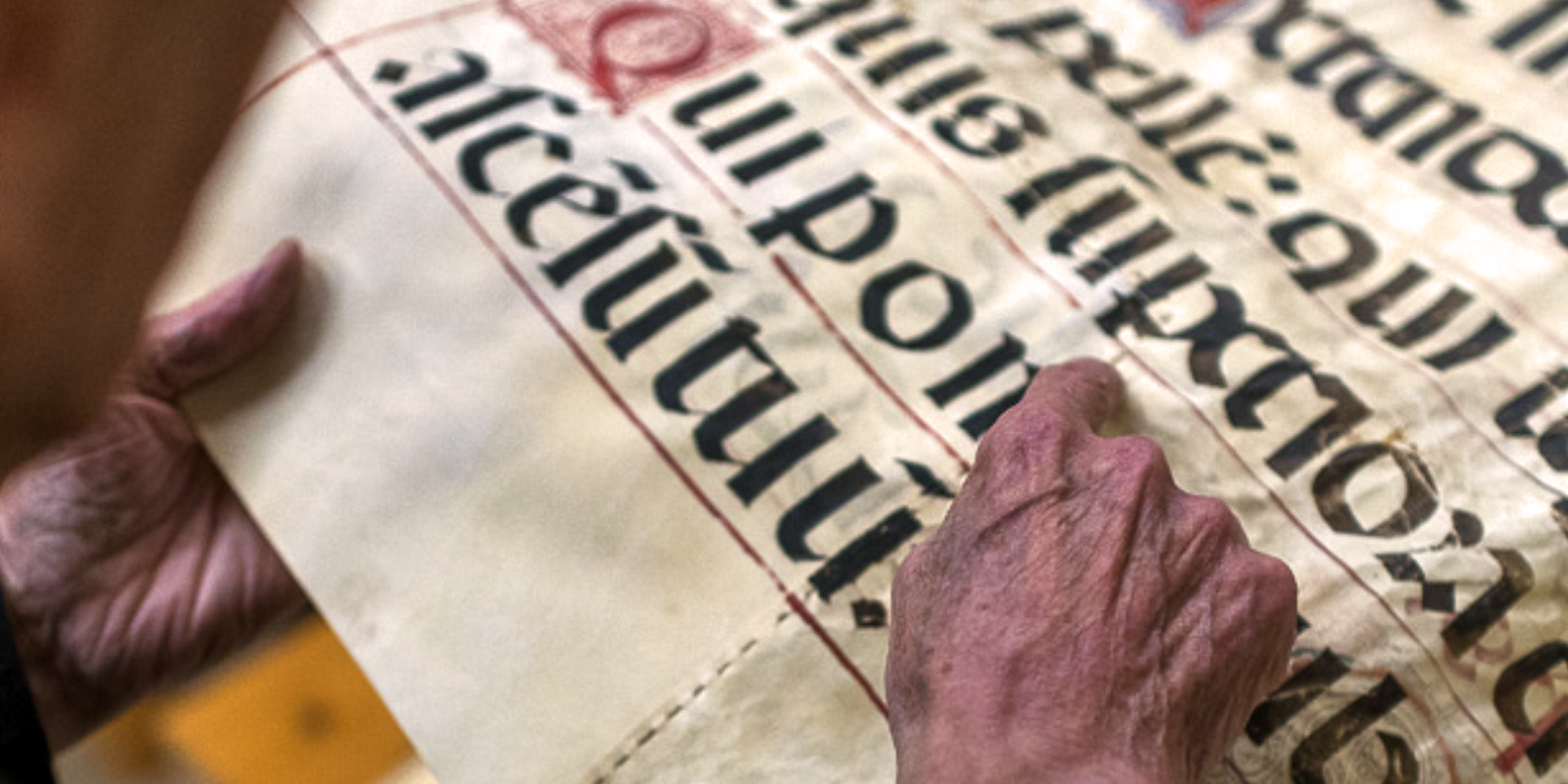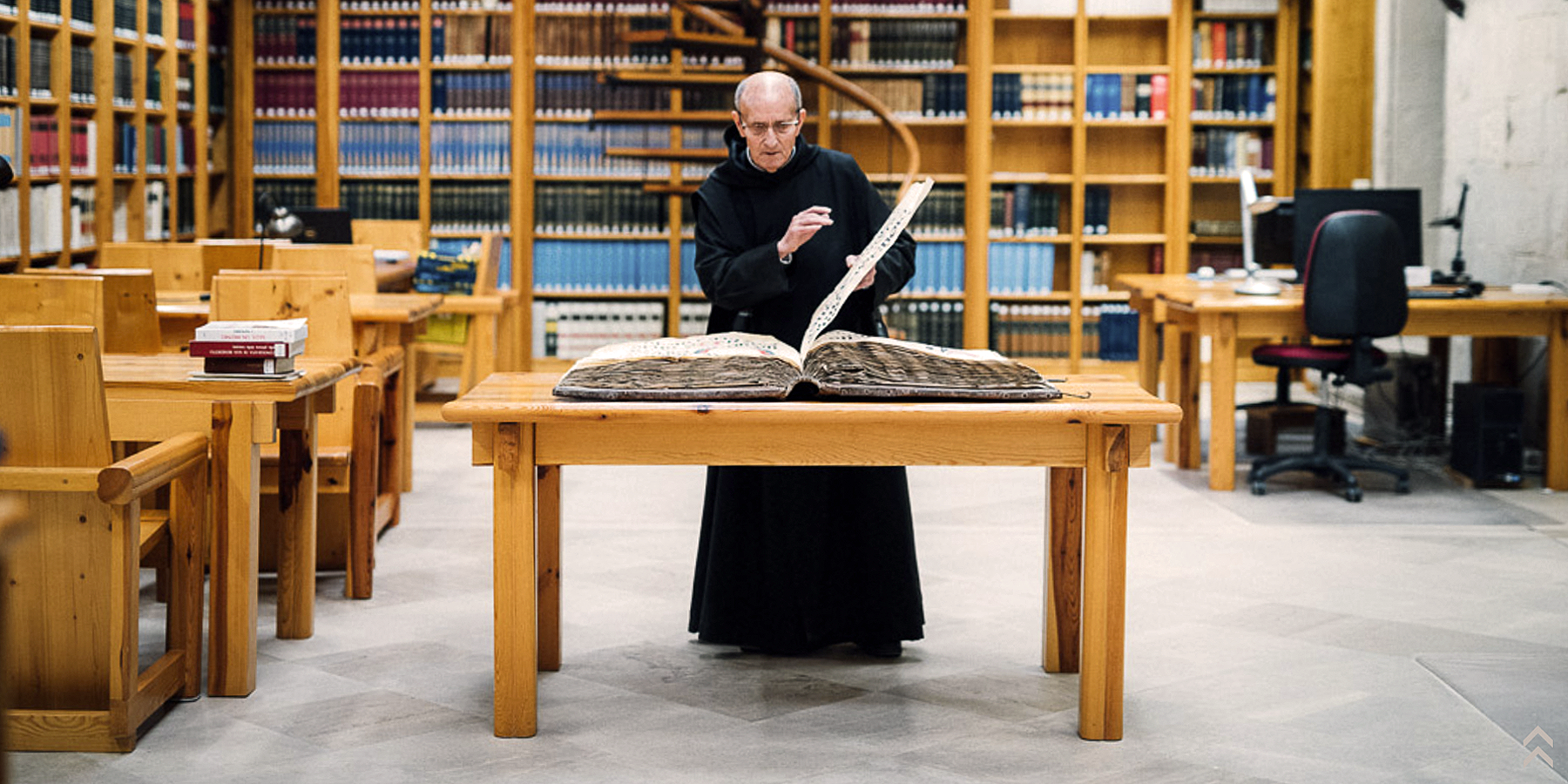Santo Domingo de Silos, like all monasteries, had a library, a scriptorium and an archive. The library collected its own books and borrowed other, necessary for the collective prayer of the community and for the continuous formation of the monks, especially the younger ones, through the reading of sacred texts and theological treatises.
The archive held documents, writings and certificates relevant to securing the abbey’s jurisdictional rights, testifying to its relations with other entities, recording the needs and events of its daily life.
The scriptorium required people skilled in writing and illustration, and only the most important abbeys excelled in producing their own productions or in copying borrowed manuscripts. This work of copying from originals from another twin monastery was a common practice throughout the Middle Ages.
The Silos scriptorium was an important copying centre and producer of numerous manuscripts throughout the 10th and 11th centuries, passing through different stages that reflected its economic situation. In the late 10th and early 11th centuries, a book-copying workshop was set up in Silos. At this time there was an important scriptorium in the nearby Monastery of Valeránica in Tordomar, Burgos, noted for the extraordinary quality of its codices in the hands of the monk Florencio. Its influence can also be seen in the work of the monk Juan de Silos, the author in 945 of the important book for the community containing the Rule of Saint Benedict commented on by the 8th- to 10th-century monk-abbot Esmaragdo.
The work of the scriptorium of Silos during the first half of the 11th century was very scarce and of poor quality, due to the situation of instability and economic hardship. It was not until Dominic’s appointment as Abbot in 1040 that the recovery of the Silos community began, with his relationship with the monastery of San Millán de la Cogolla allowing the loan of books for copying.
His work was continued by Abbot Fortunio, a period in which the Roman liturgical reform established by Pope Gregory VII was adopted, which entailed a unification of religious rituals, spiritual renewal and the organisation of ecclesiastical structures. These changes are reflected in the type of writing system, which changes from the Visigothic-Mozarabic script to the Carolingian script, which unified the Latin alphabet so that it could be recognised in different places. For this reason, there were liturgical books in these two different scripts in the Silos library collections. The Silos scriptorium was very active in the late 11th and early 12th centuries. Silos’ most important works date from these years: the Antiphonary and the Commentary on the Apocalypse of Beatus of Liébana, both of which are held in the British Library.
The codex containing the Beatus of Liébana is one of the most beautifully illuminated and best preserved, with 560 pages and 106 miniatures. It is written in Visigothic script, and its style corresponds to Mozarabic characteristics with Romanesque components. It took more than two decades to complete. The text was written by the monks Dominic and Nuño during the reign of Abbot Fortunio and was finished around 1091, with the illustrations added later by Prior Pedro during the reign of Abbot Juan, completed in 1109. In addition to the commentaries on the Apocalypse of St John written by Beatus of Liébana in the 8th century, this codex contains Saint Jerome’s commentaries on the Book of the Prophet Daniel, texts with musical annotations and other minor writings. The miniatures constitute a whole catalogue of compositions and aesthetic solutions, with double-page, full-page or single-page illustrations, with different types of backgrounds – white, coloured stripes. All of them are masterpieces, including, among others: a unique vision of hell, a world map, the commission to Saint John to write the Apocalypse; the representation of the Seven Seals, each symbol of 1000 years, which will be judged at the end of time, the struggle of the serpent against the son of the woman, which represents the struggle and defeat by the woman and the angels of this seven-headed dragon. This codex has had an eventful and travelling life. It left Silos in the 14th century and, after passing through various religious libraries, it went to the Spanish National Library, from where it was taken by Joseph Bonaparte and sold to the British Museum.
The Silos glosses are a set of annotations, explanations or comments written in the margins of more than twenty manuscripts from the monastery of Silos. These clarifications were used by the Abbot when explaining doctrine to the monks and by the monks themselves, especially the young novices, in their private reading and prayers. They are contained in the spiritual books that were used in this training work. The inclusion of these glosses was a laborious task. They were usually already written in the manuscripts that were copied in the scriptoriums, and, in fewer cases, they were incorporated directly by the copyist. In the manuscripts of the Visigothic script of Silos there are more than six thousand glosses, which at the time were of great use to the monks and today constitute important testimonies for the study of medieval culture, the Latin of the time and the origins of Spanish. These glosses are written in Latin, to clarify other Latin terms, and in Palladian Roman or Romance vernacular. They are written in three manuscripts from Silos, the most prominent of which is a late 11th century Homily and Penitential – now in the British Library. It is a book intended primarily for the laity but was used by monks in their sermons, necessary aids to convey their messages in an understandable way. This manuscript is a copy of another existing in San Millán de la Cogolla, so the glosses are also the same, which tells us about similarities in oral expressions in a relatively large territory.



